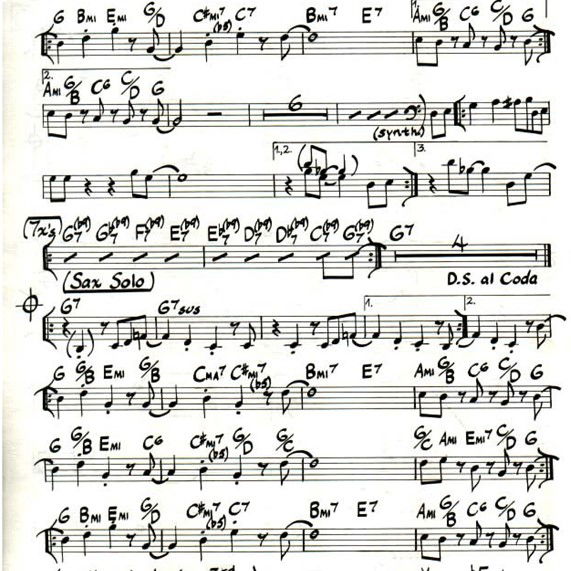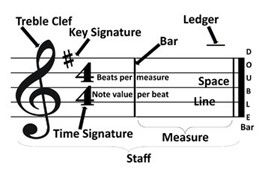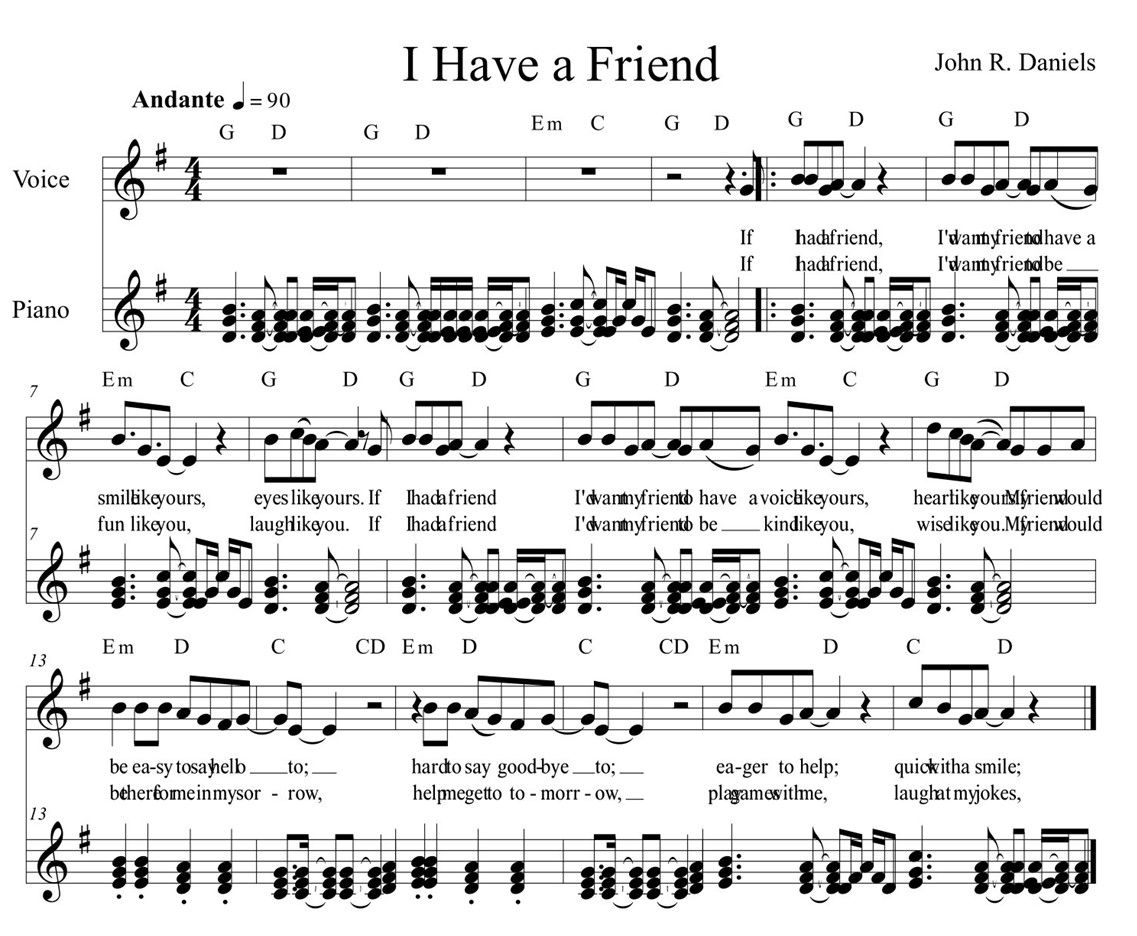How to Properly Write Words and Chords for a Fake Chart

Just a NOTE – Although most of my articles are written for people who know about music already, hopefully, this one will attract the attention of some who are still learning about music and want to read and play it properly. That is why many of the musical terms have short definitions.
One of the most important reasons that anyone writes music is to communicate with an audience. The communication takes place on a number of levels – the performance of the music itself, communicating with fellow singers and players what the composer wants the music to sound like, and communicating with other, future singers / players of the music how it should sound.
Brief History of Music Notation
The methods of writing music have changed since it was first written down. At the beginning, music had no time signature as we understand it today. Because of that, it was very difficult to write how long a note should be held. It was also very difficult to convey just which tone should be sung or played; there was no Middle C or A44 Hz to which a note could be compared.
Around AD 1000 music notation slowly began its transformation into what we recognize today, and would eventually include these important components:
- Accurate tone identification [A440, C261.63, etc.]
- Key – This goes along with tone identification. In the early days of written music (especially polyphonic music (with more than one part)) most music was in a mode. As time progressed, music became centered in either a major or minor key. The Ionian Mode became the very definition of the major key while the Aeolian Mode became the basis for most minor keys, although there are still interesting variations in minor key chord progressions and scales.
- Accurate tone length [Quarter Notes/Crotchets, Eighth Notes/Quavers]
- Time Signatures – The division of music into regularly grouped sets of note values enabled musicians to convey accurately how the music would sound.
- Speed of the music [Andante (medium), Presto (fast), Largo (slow/large)]
- Dynamics [Forte (loud), Piano (soft)]
- “Feel” or “Sound” of the music, also known as expressions [Dolce (sweetly), Agitato (in an agitated manner)]
- Method of playing, also known as technique marks [staccato (short), legato (smooth and connected), accents of all sorts, arco or pizzicato “use the bow”, “picked” - for classical stringed instruments)]
- Miscellaneous Marks. These would include notations for upcoming changes in tempo or time signature, marks for different or unusual ways to play the instrument, like a mute for a brass instrument, small chains on the springs of a grand piano, when to fire the cannons, or even when to dump a garbage can full of noisy “trash” for a special effect.
It is quite common for many of the notations in music to be most often in Italian, sometimes German or French. During the Renaissance, most of the composers were Italian, German or French. It also became common to use those languages so that musicians from anywhere could join together to play the same music and know how they should play it. This article uses the Italian words since most serious musicians in America use that for their music communications.

Modern Music Notation
It seems that modern music notation would be easy to recognize and define. It consists of a staff with one of three common clefs, a key signature and a time signature, being divided into appropriate measures with any legitimate assortment of notes. For a lot of music, that definition fits well. There are other modern music notation systems as well. Here is a list:
- The staff – as described above. It has a couple of variations. One is it’s pure form. The other is a Lead Sheet. It’s used primarily for lead vocals or instrumental solos. In it, there is a staff with key and time signatures, bar lines and, usually, a single line of written music for the melody of the song. Above each measure are the chord or chords that accompany the melody.
- Figured Bass – Although relatively rare, this method is included because it is the forerunner of the next type in the list.
- Nashville Numbers – This notation system is generally used by contemporary rhythm musicians either in a recording studio or for playing live. It has no staff or notes. The key will be noted at the beginning of the song. It relies on numbers to indicate which chord to play. E.g., if a song is in the key of D, the chord progression could look like this: 1 1 4 5 1 2 5 5 and would indicate the chords D D G A D E A A In the key of G, the same numbers would indicate the chords G G C D G A D D The benefit of using this system is that if the key needs to be changed, the chords don’t need to be re-written, the musician simply plays the corresponding chords in the new key.
- Chord Symbols – Also known as Fake Charts, this notation system is designed for players who know the key that the song is in, and are certain that the key will not need to be changed. (It can be used with a capo, but that should be done sparingly. It should be done sparingly, but, unfortunately, the capo has been misused by becoming a substitute for musicians learning what they really should know about their instruments.)
- Guitar Tabs – Tabs can be for six or twelve string guitar or bass guitar and is used for writing a melody. This notation indicates which frets to play.
Pros and Cons of Each Notation System Each system is better suited for a different type of musician, although many good musicians can read more than one. Here are the Pros and Cons of each:
The Staff and Figured Bass systems
- PROS – Best suited for composers who want to convey very specific information about the music they are composing, usually for voices, strings, wind instruments and percussion that would play very specific rhythms.
- CONS – Allows for very little improvisation. Also gives little, if any, indication to accompanying rhythm players what sort of rhythm should be used (often referred to by guitar players as strum pattern).
Nashville Numbers
- PROS – Very easy to transpose from one key to another (unless it is an exotic key like Gb minor). Allows for improvisation and an assortment of rhythm variations, these being designated by the rhythm section leader.
- CONS – It does require a fair knowledge of at least the notes and chords part of music theory.
Chord Symbols / Fake Charts
- PROS – Very easy for beginners and less trained musicians to pick up. Also allows for improvisation and an assortment of rhythm variations.
- CONS – Hard to change key quickly although, as stated before, immature guitar players are quick to simply use a capo instead of learning new chords.
Guitar Tabs
- PROS – Easy for beginners to learn how to play a melody, because often the best fingerings have been worked out by whoever created the tabs.
- CONS – There is no indication of what the duration of any of the notes is or the rhythm that needs to be used.
Proper Way to Write Chord Symbol Charts / Fake Charts
The rest of this article deals with the Chord Symbol Charts notation system. The other systems have become somewhat codified over the years. However, the chord charts have become difficult to read. Remember, a written music system is designed to communicate the composer’s intentions to anyone who is reading and playing/singing the music. Most of the chord symbol charts seem to have been written for players who already know the song.
Here are a couple of personal experiences for reference.
I once played bass in a praise team, but I only knew one for the songs. When I tried to play the chord charts for the ones I didn’t know, I played the chord changes as they were indicated. However, the were indicated so poorly that it was impossible to tell where the changes were supposed to be. One song even had a few time signature changes that were not indicated at all. I asked the team leader about them and he said that he just played it the way he felt it. I evidently didn’t feel it the way he did.
Some years before that, I had the privilege of being on TV in Pittsburgh, PA, playing a couple of my Christian rock songs that I had written. The TV station had a house band that would be accompanying me. I wrote the fake charts for the band in such a way that we only needed to go over each song once before we recorded the show. That is the method I still use and promote.
Most chord symbol charts that I’ve seen look like this:

That phrase is eight measures long, has four chord changes, and three pairs of measures in which the chords do not change. But, none of that is indicated in the chart. Also, the chord symbols are not above the words where the chord change is made.
If staff paper were used, the writer could indicate the bar lines and the chord(s) played in each bar. But, that takes up a lot of unnecessary space. The best way to write that phrase would be:

Each measure is delineated by the vertical line and the chord symbol appears directly above the word with which it corresponds. The A in Amazing is actually a pick-up note, so there would need to have been an introduction written as well. If there had been any alternate bass lines, they would have appeared underneath the chord, like this:

If there were more than one chord in a measure, it would be indicated by a slash (/) or a dash (-). Here is a sample:

The Intro. starts with a split bar, 2 beats on G, 2 beats on D. The rest of the measures in the intro are similar split bars. Most of the measures in the song are split bars until the third line. The measure that looks like |C / C – D| has 2 beats on C, plus another beat on C and one on D. The reason that the C is repeated twice is a reflection of the way that well-written staff music is written. The song is in 4/4, so, to help musicians count easier, it’s best to indicate where the first and third beat of the measure are. If the C chord had simply been marked as 3 beats, it would have been unclear on what beat the D chord should have been played.
The essence of writing a great Fake Chart is to mimic a Lead Sheet in bar line and chord placement. Here is a severely compressed version of the original music to this song. It has a piano part and melody, both with bar lines, lyrics, and properly placed guitar chords. (The left hand of the piano is absent to keep things simple.) The fake chart that came from it has the lyrics and the properly placed chords with indicators for the bar lines and any chord changes within the bar lines.

If a Fake Chart is written in this manner, it should convey all of the information that a rhythm instrument player should need to play the song successfully, except for any rhythmic instructions (strum pattern) which is usually best done by the section leader, and often sounds like, “chicky bum strum strummy” or something similar.
Salt Cellar Creations understands the need for accurate music of all sorts. We have a growing library of some of John’s original concert songs as well as an assortment of more classical works. Explore John’s original songs HERE.
SCC can also compose an original piece for you or do a custom arrangement for you. There are two ways that this can be done; one is much more affordable than the other. And SCC is always looking for ideas of pieces to arrange or suggestions for original pieces.
We have sold music not only in the US but in Canada, the United Kingdom, France, Australia, and New Zealand. Please visit the WEBSITE or CONTACT US to let us know what we can do for you!